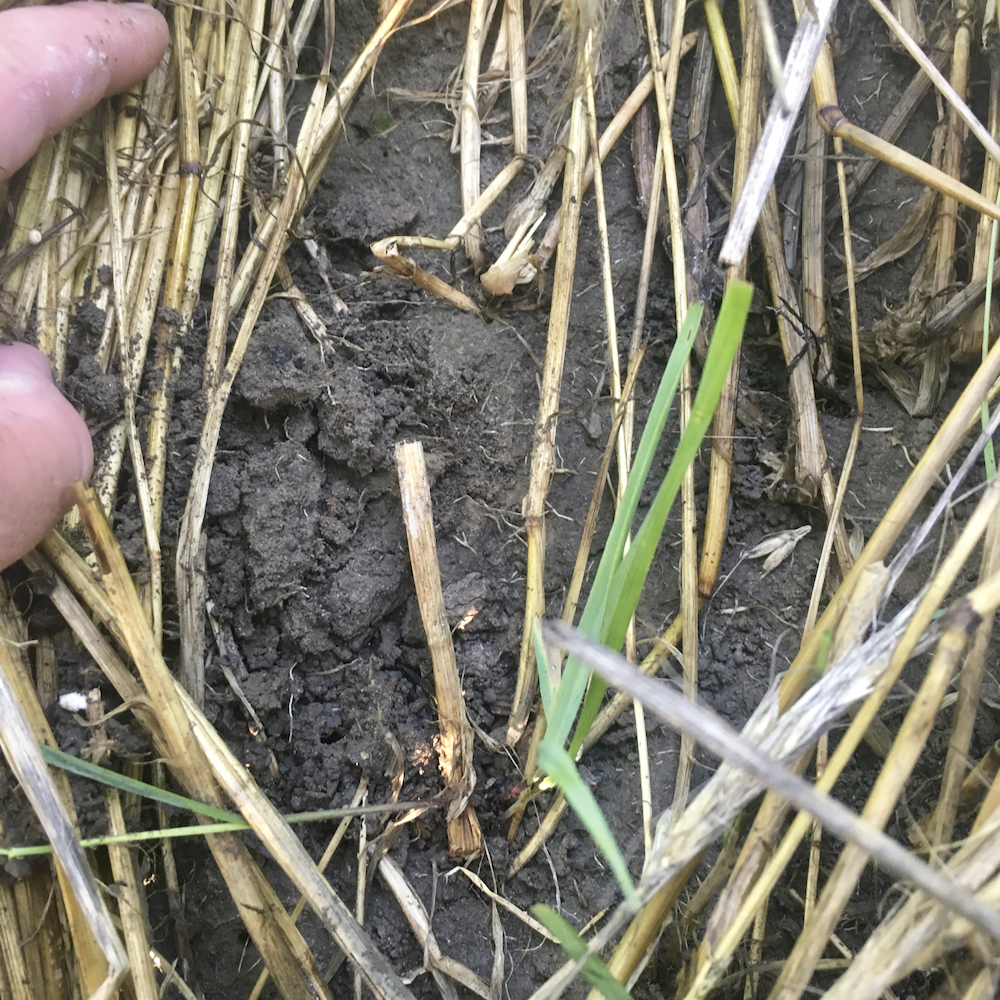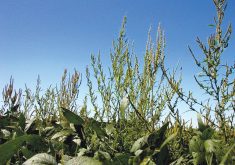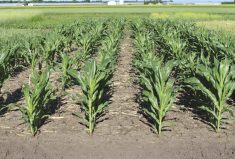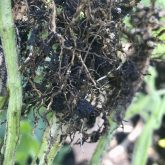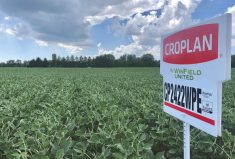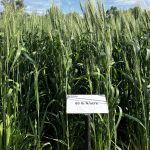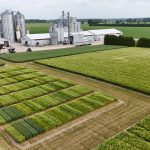No one has ever said organic production is easy. It can be profitable, but just as in conventional row cropping, it’s subject to vagaries in price, weather, weed management and quality.
But no-till organic? In soybeans? That’s an entirely different level of thought processing, planning, monitoring and showing flexibility in adjusting to growing season conditions. For starters, there’s the three-year certification process necessary for organic production.
Then, in an intriguing turn on weed management, learning to use cereal rye as a cover crop weed suppressant. That’s the subject of a three-year study by the Ontario Soil and Crop Improvement Association (Tier 2 project), funded by the Ontario Ministry of Agriculture, Food and Rural Affairs (OMAFRA) and the Canadian Agricultural Partnership.
Read Also
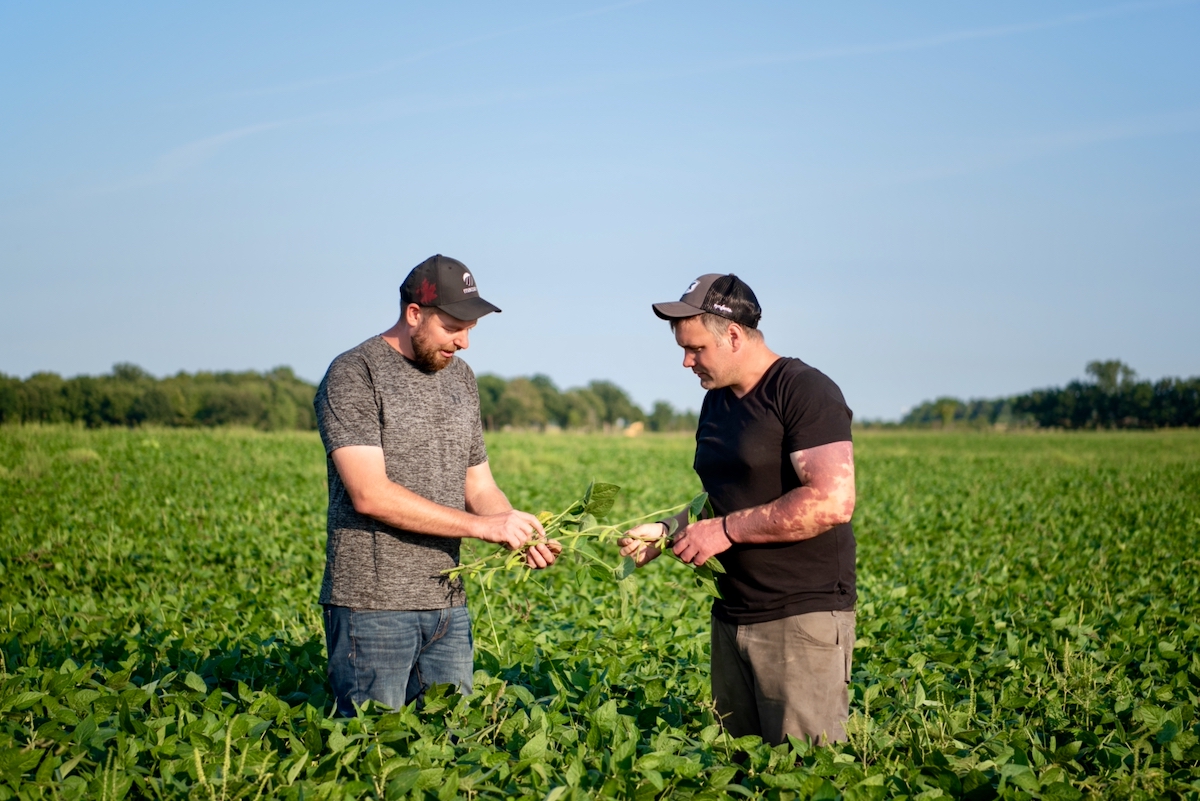
Ontario farmers partner for success
Ontario business partners, Matt Bergman and DJ Wassenaar, have been farming together for 10 years. Their focus on integrating unconventional…
OMAFRA field crops soil management specialist Jake Munroe led the 2019 to 2021 study with the help of OSCIA farmer co-operators. He came away with several recommendations and conclusions for those interested in exploring no-till organic soybean production.
To start, it’s a system better-suited to established organic growers, not as a first step for transitioning from conventional/GMO-based crops to organic. Second — and perhaps most important — yields in the three years averaged 32 bushels per acre, 40 per cent lower than tillage-based organic production and conventional no-till (using herbicides).
“You can still be profitable with yields that aren’t as high, and if you are getting high yields, you’ll be that much more profitable in organic production,” Munroe says.
He doesn’t want to discourage growers from trying, just ensuring they go into this knowing the facts. “The comparison should be made between standard 30-inch-row, tillage-based organic soybean production compared to this cover-crop-based organic no-till system.”

Lots of work in advance
Munroe has authored an online resource on OMAFRA’s Field Crop News website. The document details seeding the rye cover crop in late summer, gauging its viability as a weed suppressant, roller-crimping the crop the following spring and then planting soybeans. The full timeline consists of:
- Seeding cereal rye at 110 to 170 lbs./ac. in late August/early September.
- Monitoring its progress through fall to determine its overall production. If it’s too thin, till under before jointing. If conditions in spring are dry but the rye stand is reasonably strong, harvest it as grain or cut it for feed.
- By April to May, cereal rye can grow rapidly — as tall as six feet.
- Use a roller-crimper in late May to flatten the cover crop at 50 per cent anthesis (although that’s open to discussion).
- Plant/seed soybeans in late May to early June at populations of 250,000 to 300,000 seeds per acre to close canopy and maximize yield.
- Monitor the soybean seedlings as they emerge later in June.
- Ideally, the cereal rye mulch will suppress weeds until the soybean canopy shades out weeds.
Equipment
Munroe recommends planting or seeding equipment that can cut through thick plant residue. OMAFRA soybean specialist Horst Bohner helped Munroe, using a Kearney no-till planter with a three-quarter-inch wavy coulter that did a bit of tillage and cut through the mulch and the root balls of the rye. Munroe stresses that adequate down-pressure is needed to get the seed to depth consistently, along with closing wheels that will close the seed slot (the OMAFRA tests used a Dawn Gaugetine closing wheel).
He says it’s not that it can’t be achieved with regular planters, but organic growers may not want to make those modifications on a planter that’s mostly doing corn in a full-tillage setup.
“That being said, this is a system that largely appeals to and has been adopted by organic growers, and most of them will have a conventional planter that’s not equipped for high-residue or no-till conditions. That’s the challenge of having that equipment or making modifications to a planter specifically for this system. A well-maintained no-till drill can be used to seed soybeans instead into standing rye ahead of crimping.”

The complexity of managing an organic no-till soybean crop benefits a grower who has a backup plan to answer the “what if” scenario of a thinner-than-desired cereal rye stand or a dry early summer. A heavy rye cover crop needs a lot of moisture, and in a drier-than-normal May and June, planting soybeans will prove a challenge.
“If you deplete that soil profile of moisture through a rye crop in a year where it’s very dry and you aren’t bailed out with timely rainfalls, that’s where you might see the biggest yield hit,” says Munroe, speaking from experience in one of the test years.
Greater flexibility
Aaron Bowman has learned the ins and outs of organic production and views no-till soybeans as an occasional cropping option. The livestock producer from Hampton, just east of Oshawa, raises beef cattle and markets it through the family’s on-farm store. Of the operation’s 350 acres, 240 are certified organic, featuring seven or eight crops in rotation, including three or four years of alfalfa, grain corn, forage corn, and oats, pea or sorghum as a cover.
Corn remains the main crop and June is the line in the soil for determining whether it’s planted in a given year. Bowman has a cultivator with an RTK-controlled electronic eye with a side shift that moves the row unit for the scuffler unit that kills weeds. The RTK capability also provides repeatability. But if they get back-to-back rain events and can’t get in to scuffle the first few weeds that get into the corn row, it’s done.
Although Bowman hasn’t grown organic soybeans with a rye cover in the past two years, he has started 2023 with three fields under rye. If soybean prices spike, he can adjust his plan in the spring.

“A lot of it comes down to how you prepare it, how you get it ready and when you terminate it,” says Bowman, who consulted several people on using rye as a cover, including Erin Silva at the University of Wisconsin. “Broadcasting rye seed has been a game changer and most people drill their rye … in my opinion, you’re leaving a space, and if you leave spaces, we all know that weeds will find them.”
Timing of crimping is the other concern in dealing with the rye cover crop. The first year Bowman worked with organic soybeans was 2016, which ended in disaster by his standards — they crimped too early. The rye started coming up and again and continued consuming all available moisture. The rye remained viable and goosenecked as it regrew. Thankfully, it was only nine acres but he wound up letting the cattle graze on it, then turned it under and planted sorghum. He returned to it in 2018, but not before consulting with Silva.
“She made it blatantly clear where I had messed up: I crimped too early,” says Bowman, who is also a Corteva seed dealer. “She said it needed to be at 100 per cent anthesis, getting to that milk stage where you start to see small seed. When you crimp it, it’ll stay down.”
His 2018 results were much better, crimping around June 6 to 7. He also uses a planter for soybeans into the rye cover, running 20-inch rows and doubling back to them on 10 inches. He plants 225,000 seeds per acre, and says the only drawback is the time required for the soybeans to canopy, which means giving up more sunlight.
“We all know that wasting sunlight on soybeans is not a good thing,” says Bowman. “I’m a firm believer that the planter puts the seed where it belongs, where you have a lot more control over depth, especially with our hydraulic downforce. It’s never riding over top, and I know for a fact it’s always cutting through and jamming it to the bottom of the trench. There might be an inch to an inch-and-a-half of residue that you have to compensate for and ensure you’re still planting at the depth and to moisture, because that rye is really pulling away huge amounts of moisture.”
The rye in rotation provides flexibility and an insurance plan. If the livestock operation needs more feed or grazeable acres, Bowman can always harvest the field mechanically, or “with four legs.” That’s the benefit of having livestock, where there’s less waste and it’s more forgiving in terms of using the mistakes to help the cattle.
The project was funded in part by the Ontario Ministry of Agriculture, Food and Rural Affairs through the Canadian Agricultural Partnership.


